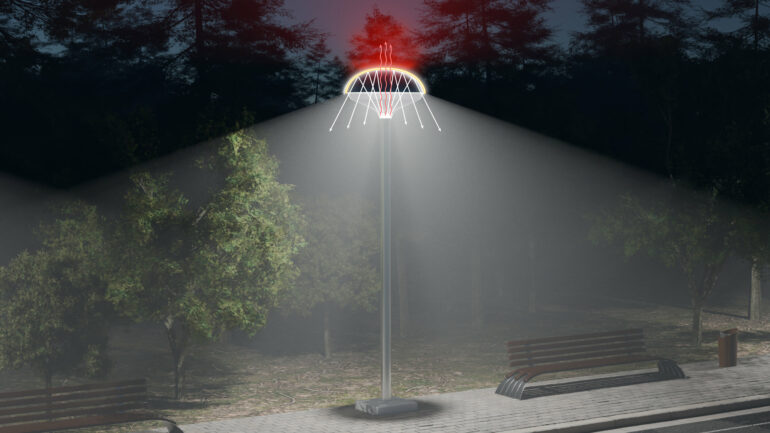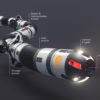A new study resulting from a collaboration between King Abdullah University of Science and Technology (KAUST) and King Abdulaziz City for Science and Technology (KACST) shows how nanomaterials can significantly reduce the carbon emissions of LED (light-emitting diode) streetlights. The research team estimates that by adopting this technology, the United States alone can reduce carbon dioxide emissions by more than one million metric tons.
The findings are published in the journal Light: Science & Applications.
The nanomaterial, called nanoPE, enhances the emission of thermal radiation from the surface of the LED to reduce the LED temperature. LEDs generate heat, which raises their temperature and risks damaging the LED electronics and shortening the LED’s lifespan. In fact, approximately 75% of the input energy in LEDs is eventually lost as heat.
The study leader, KAUST Professor Qiaoqiang Gan, said, “LEDs are preferred light sources because of their superior efficiency and lifespan. But small enhancements can improve them even more, and that can make a big difference to sustainability, because even small improvements have a big effect when used everywhere.”
He added that lighting is approximately 20% of the world’s annual electricity consumption and contributes to nearly 6% of global greenhouse gas emissions.
Dr. Hussam Qasem, General Manager of the Future Energy Technologies Institute at KACST and contributor to the study, added, “Our design significantly improves LED cooling while maintaining high illumination efficiency, making it a promising solution for sustainable lighting in Saudi Arabia.”
Typical LED streetlights direct their light toward the object to be illuminated, which is why they point towards the ground. They are also designed such that thermal radiation stays trapped inside the LED. On the other hand, streetlights coated with nanoPE are literally turned upside down so that they are directed towards the sky and away from the object to be illuminated.
The reason for this inversion is that NanoPE is designed so that infrared light, the light most responsible for thermal radiation, passes through it while visible light is reflected. The study showed that more than 80% of the infrared light emitted by LED streetlights coated with nanoPE passes through nanoPE and continues towards the sky. In contrast, more than 95% of the visible light emitted reflects off nanoPE and back to the ground, illuminating the area beneath.
NanoPE is based on polyethylene, the most widely produced plastic in the world. To create a nanoplastic that reflects low-wavelength light (visible light) but passes high-wavelength light (infrared), the scientists carefully made pores as small as 30 nm—about 1,000 times smaller than the thickness of a human hair—into the plastic as well as stretching and transforming it into a thinner sheet.
KAUST Professors Osman Bakr and Boon Ooi, postdoctoral researcher Saichao Dang, master’s student Hasan H. Almahfoudh, and KACST Assistant Professor Abdulrahman M. Alajlan also contributed to this work.
More information:
Saichao Dang et al, Sky cooling for LED streetlights, Light: Science & Applications (2025). DOI: 10.1038/s41377-024-01724-7
Provided by
King Abdullah University of Science and Technology
Citation:
A new nanoplastic paves the way for sustainable street lighting (2025, March 19)



